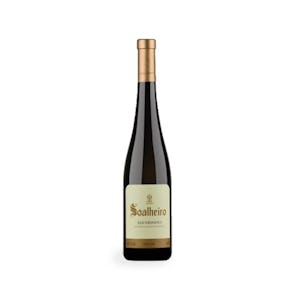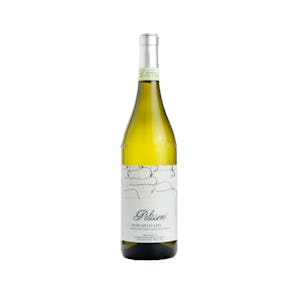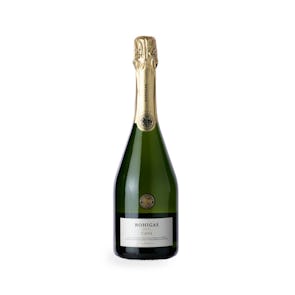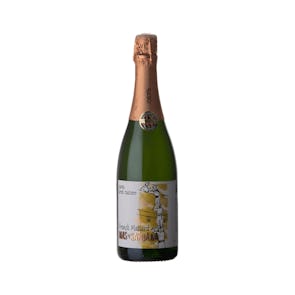
Morishima Omachi Junmai Daiginjo
Exquisite Sake for Connoisseurs
Tasting Notes from the Curator
The Morishima Omachi Junmai Daiginjo captivates with its intricate tapestry of aromas emanating primarily from its use of the venerable Omachi rice. This rice endows the sake with a nuanced earthiness, providing depth that distinguishes it within the coveted category of Junmai Daiginjo. The aroma profile is delightfully fruity, with pronounced notes of melon and pear, complemented by subtle floral undertones reminiscent of spring blossoms. The initial sweetness on the palate is gentle and elegantly refrains from overwhelming the senses, instead offering a refreshing hint of sweet acidity. The sake’s umami qualities, attributed to the quality of the Omachi rice, introduce a savory depth that entices the taste buds. The finish is distinctly crisp, creating a sharp contrast that cleanses the palate and amplifies its complex flavor profile. The silky texture of this sake glides with glossy transparency, speaking to the meticulous brewing process and rendering it a distinguished choice for enthusiasts and casual drinkers alike.
Pairings & Suggestions
Dive into a culinary journey as versatile as the Morishima Omachi Junmai Daiginjo itself. Seafood, with its natural umami, finds a harmonious partner in this sake. Pair it with sushi and sashimi to enhance the delicate flavors of fresh fish. Grilled fish, particularly those with light seasoning, resonate beautifully with the sake’s crisp finish, accentuating slightly charred nuances. For an engaging twist, pair it with light cheeses such as brie or camembert, where the creamy textures are beautifully balanced by the sake’s acidity and subtle floral notes.
Incorporate European elements with creamy desserts like panna cotta, the sake’s sweet acidity harmonizing with and cleansing between each decadent bite. It also suits Asian delicacies like Thai seafood curries and Vietnamese pho, where its acidity refreshes the palate after these flavorful dishes. Its adaptable nature encourages culinary creativity, beckoning adventurous pairings and elevating traditional meals.
Unveiling the Rich Legacy of Sake Craft
The story of Morishima Sake Brewery is steeped in rich cultural heritage and demonstrates remarkable resilience. Founded by Michimasa Morishima, an ex-samurai, it captures Japan’s historical narrative of perseverance. Set against the backdrop of Ibaraki Prefecture, known for its quality rice cultivation and proximity to the Pacific’s humid air, the brewery’s heritage is interwoven with the essence of Japanese craftmanship. The historical adversity faced by the brewery, such as its destruction during World War II and the Great East Japan Earthquake, underscores its commitment to tradition and innovation. The brewmaster’s personal involvement ensures meticulous attention to detail in every batch. This connection fosters an authentic embrace of Japanese culture, from traditional sake-making methods to the integration of local farming practices, steadfastly supporting community growth. Morishima Sake Brewery vividly encapsulates the narrative of resilience, tradition, and the artistry that defines sake craftsmanship, making each bottle a testament to Japanese perseverance and culture.
Understanding Junmai Sakes
When it comes to Junmai sake, the difference lies in the rice — how much of it is polished away, and how that choice shapes the flavor. Think of it as minimalism versus refinement — each tier offering its own kind of beauty.
-
Junmai (≤70% polish): Bold, earthy, full-bodied. You taste the rice. Great warm or room temp.
-
Junmai Ginjo (≤60% polish): Lighter, more aromatic with hints of fruit. Smooth and slightly refined. Best chilled.
-
Junmai Daiginjo (≤50% polish): Ultra-polished, delicate, complex. Soft, elegant, and best enjoyed cold — a luxury pour.
The more the rice is polished, the more delicate and nuanced the sake becomes. But that doesn’t mean “better” — it’s about preference, occasion, and the kind of experience you want in the glass.
Storage Instructions
Store unopened sake in your fridge ideally at 4°C. If you wish to drink your sake chilled, place it in the refrigerator the night before consumption. Opened bottles should always be kept refrigerated. If you later wish to drink your sake at room temperature, place the portion you want into a small pouring vessel and leave that out on the counter at least 3 hours before consumption. Generally, sake should be consumed within one year of the bottling date, but when properly stored, it can survive up to 2 years. An open bottle of sake must be consumed within 2 to 3 weeks.





